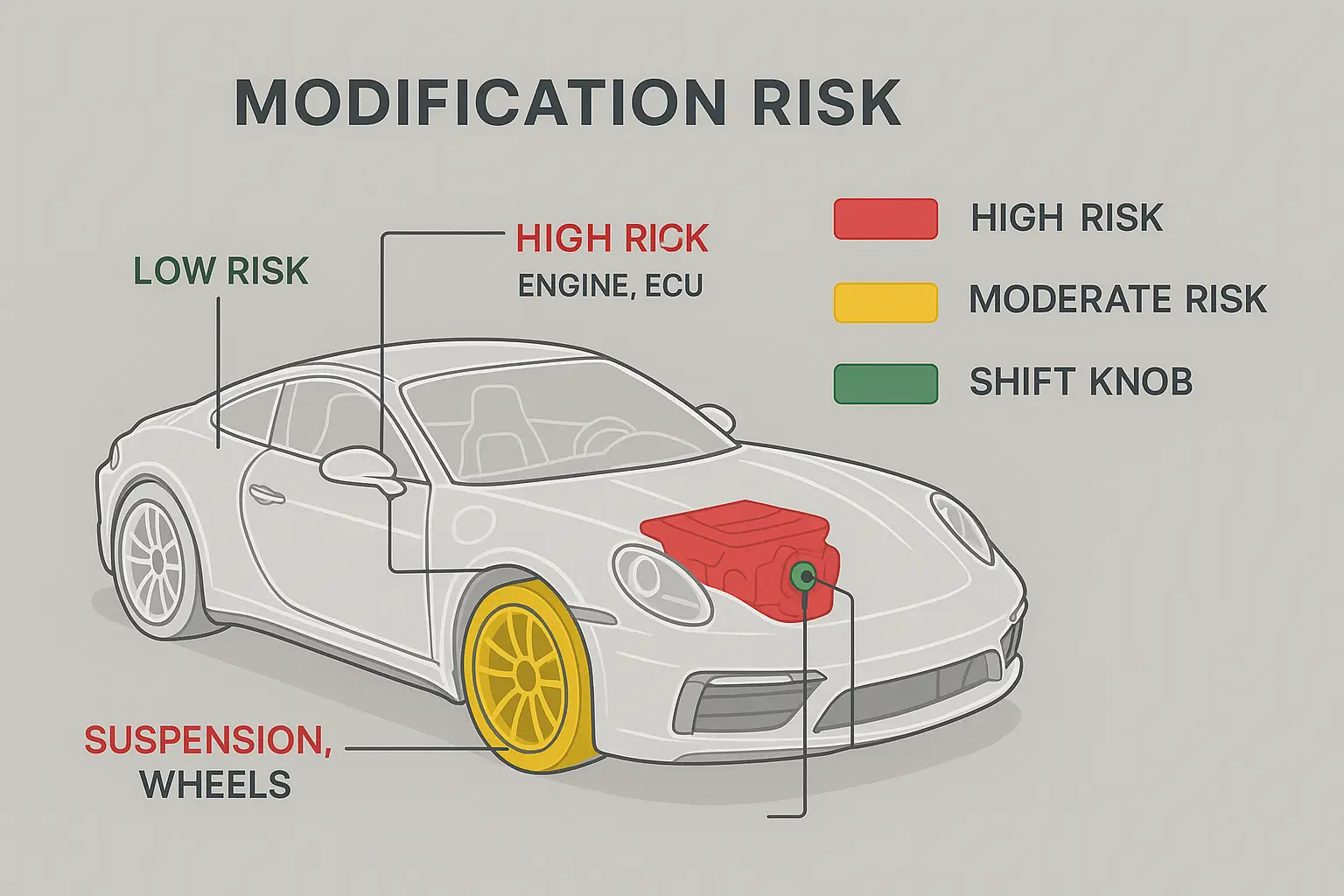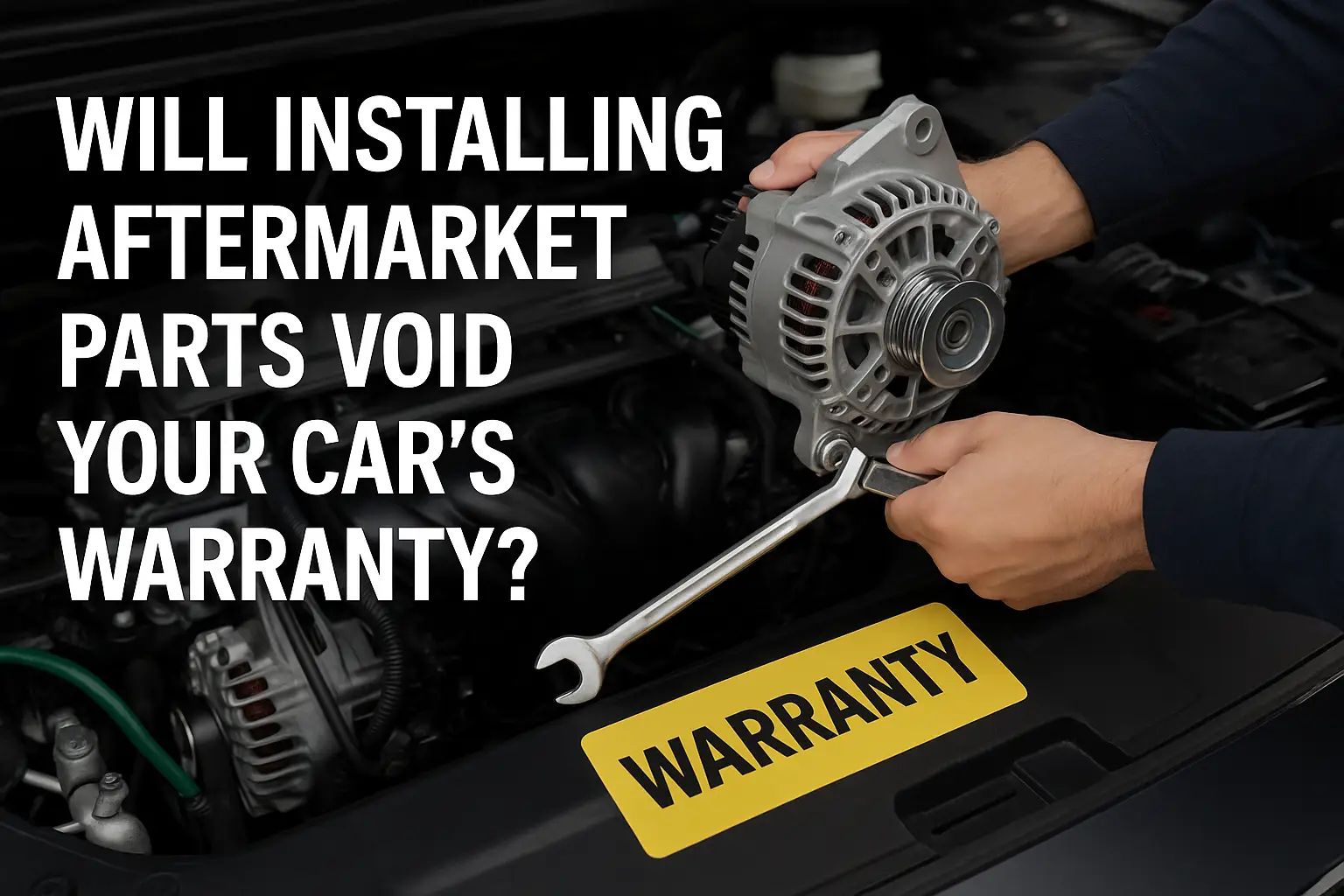Dreaming of a new exhaust or custom tune? You want to personalize your car, but you're terrified the dealership will void your warranty, leaving you facing a massive repair bill alone.
No, adding an aftermarket part does not automatically void your entire car warranty. A U.S. federal law, the Magnuson-Moss Warranty Act1, requires dealers to prove that your specific modification directly caused the mechanical failure before they can deny a related warranty claim.

This legal shield is a game-changer for car enthusiasts. I remember the anxiety I felt wanting to install a simple cat-back exhaust on my first brand-new car. I thought any change, no matter how small, would give the dealer an excuse to tear up my warranty. But understanding your rights empowers you. It doesn't give you a free pass to modify recklessly, but it prevents manufacturers from using an unrelated part as a scapegoat. The key is knowing exactly what the law protects and where the real risks lie.
What Law Actually Protects You from a Voided Warranty?
Feeling confused by conflicting advice? Your friends say it's fine, but the dealer's service department makes it sound like you'll instantly lose all coverage, leaving you worried and unsure.
The Magnuson-Moss Warranty Act of 1975 is your primary protection. This federal law explicitly makes it illegal for a manufacturer to require you to use their branded parts to maintain your warranty, unless they provide those parts for free.

This law was created to stop what are called "tie-in sales provisions." A dealer can't legally say, "You must use our Genuine OEM oil filter, or your engine warranty is voided." The most powerful part of this law is that it places the "burden of proof" on the dealer and manufacturer. If your car's touch screen stops working, they cannot blame it on the new suspension you installed. To deny the repair, they would need to provide a documented, technical explanation of how the new suspension caused the screen to fail. It's a fundamental principle that separates unrelated issues from direct consequences.
The Burden of Proof in Reality
This concept is what stands between you and an unfair denial. The dealer must do more than just point at your part. They need to demonstrate cause and effect.
| A Dealer Cannot Legally Do This: | A Dealer Can Legally Do This: |
|---|---|
| Void your entire warranty for one aftermarket part. | Deny a claim for a specific failed component. |
| Deny a claim for a rattling sunroof because you installed new tires. | Deny a claim for a broken axle if you installed cheap wheel spacers that failed. |
| Insist you use their brand of oil for routine changes. | Provide a written report explaining how your ECU tune caused piston damage. |
Understanding this table is the first step to modifying your car with confidence and knowledge.
What Kind of Modifications Put Your Warranty at Real Risk?
The law seems to offer great protection, but you know some mods are riskier than others. You want to understand where the real danger lies and which upgrades are truly safe.
The level of risk is directly tied to how a part interacts with the car's essential systems. Cosmetic changes are safe, while modifications to the engine control unit (ECU), internal engine parts, or forced induction systems carry a high risk of a justified warranty denial.

Thinking about risk on a spectrum is the most practical approach. A dealership will have a very difficult time blaming a failed transmission on your new floor mats. But they will have a very easy time linking a catastrophic engine failure to an aggressive aftermarket engine tune. I learned this when I installed an aftermarket cold air intake. While it's a relatively simple part, I chose a reputable brand that came with data showing it wouldn't disrupt air-fuel ratios. This was my proof that I made a responsible choice. The goal is to avoid giving the dealer an easy, logical path to connect your part to the problem.
Modification Risk Spectrum
| Risk Level | Example Parts | Why It's Risky (or Not) |
|---|---|---|
| Virtually Zero Risk | Floor mats, phone mounts, stickers, shift knobs. | These parts have no interaction with the car's mechanical or electrical systems. A denial would be impossible to justify. |
| Low Risk | Cat-back exhaust, properly-sized wheels, cosmetic body kits. | These parts are downstream or separate from major systems. It's very difficult to prove they caused a failure in the engine, transmission, or electronics. |
| Moderate Risk | Suspension (springs/coilovers), big brake kits, cold air intakes. | These can affect related parts. Improper suspension setup can cause premature wear on bushings or axles. A bad intake could affect engine performance. |
| High Risk | ECU tunes, turbo/supercharger kits, internal engine work, fuel system upgrades. | These directly alter how the engine and drivetrain operate under stress. A direct cause-and-effect link to failure is much easier for a dealer to prove. |
How Can You Prepare for a Warranty Claim with a Modified Car?
You know your rights, but you're worried about a "he said, she said" battle at the dealership. How do you arm yourself with the right evidence to prevent a problem before it starts?
Your best strategy is proactive preparation. Maintain meticulous records of all parts and installations, choose high-quality components2, and understand how to communicate effectively with the service department. This builds a strong case for you being a responsible owner.

Being prepared is 90% of the battle. Before I ever go to a dealership for a potential warranty issue, I organize my records. I treat it like I'm preparing a case for a judge, even for a minor issue. This mindset changes how you approach the situation. You are not asking for a favor; you are exercising your rights under your warranty agreement. Being organized, calm, and informed makes it much harder for a service advisor to dismiss your claim. You immediately establish that you are a serious and knowledgeable owner.
Your Proactive Action Plan
- Document Everything: Keep a dedicated folder with receipts for every part. If a shop does the install, keep that invoice too. This creates a paper trail proving what was done, by whom, and when.
- Talk to the Service Advisor Correctly: When you have a problem, just state the symptoms. Don't diagnose it yourself. Say "The car hesitates under acceleration," not "I think my aftermarket intake might be causing a problem." Don't give them an easy way out.
- Consider Reversibility: For some moderate-risk parts, you might consider choosing ones that can be easily swapped back to the factory original before a dealer visit. While you shouldn't have to, it can sometimes be the simplest way to avoid a debate.
- If a Claim is Denied: If they deny the claim, ask for the denial in writing, along with their technical evidence proving your part caused the failure. If they can't provide it, calmly escalate the issue to the service manager, then the dealership general manager, and finally the manufacturer's corporate customer service line.
Conclusion
Modifying your car while it's under warranty doesn't have to be a source of stress. The Magnuson-Moss Act gives you powerful legal protection. It ensures that you remain in control, and the burden of proof is on the dealer, not you. By choosing quality parts, keeping good records, and understanding the real risks, you can personalize your vehicle with confidence and peace of mind.


